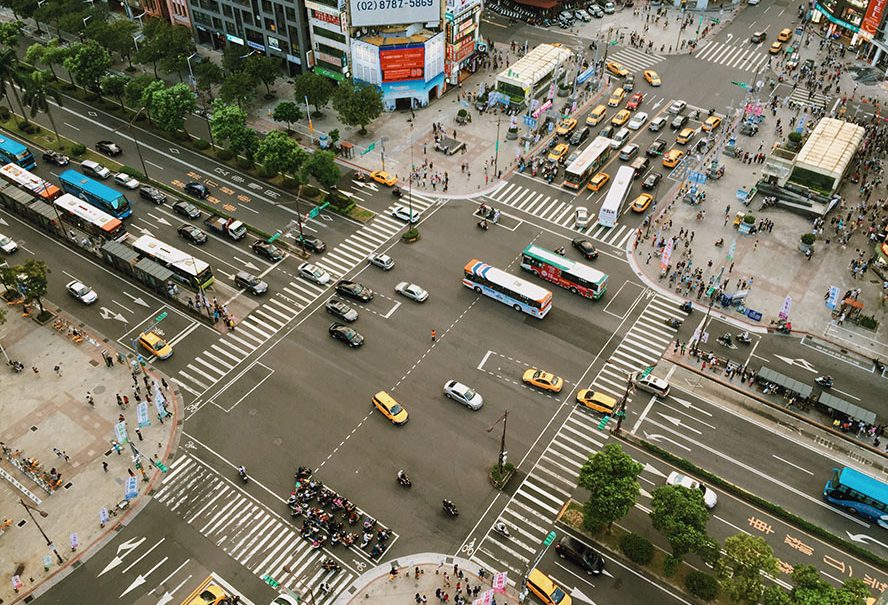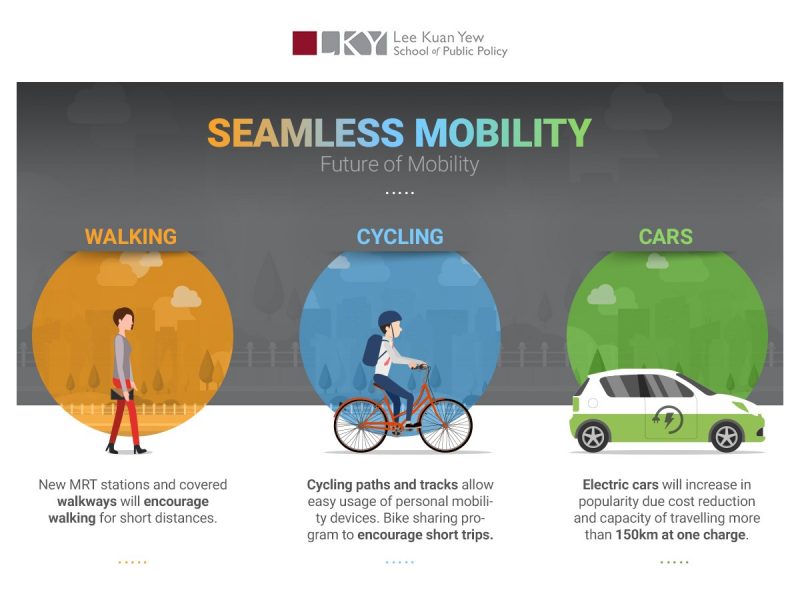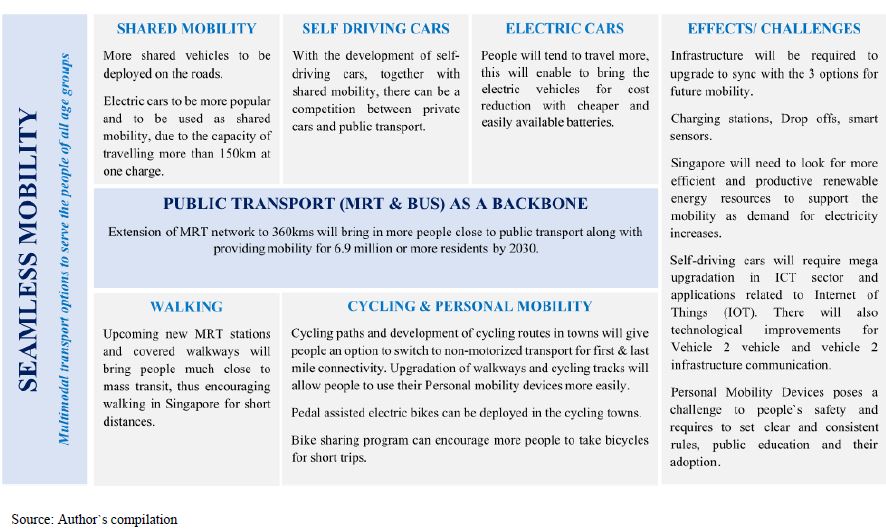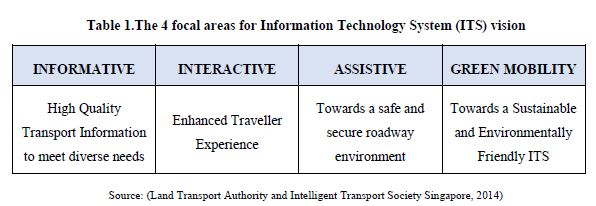Essay competition winner, Devansh Jain, takes us through the challenges and suggested improvements for Singapore’s urban mobility.

Mobility is key to thefunctioning of a liveable and sustainable Singapore. An efficient people-mover system is the backbone of urban planning. In anticipation of population growth and demographic changes, transport planners should therefore adopt a long-term appreciation of transportation issues. Envisioning ahead, Land Transport Authority (LTA) Singapore is poised with the challenge to develop an integrated and sustainable transport system that meets the diverse needs of its burgeoning population.
Moving forward, the keys to ensuring a sustainable and people-centric transport system lie in the country's ability to harness the capabilities of information communication technologies, factoring resilience into infrastructure planning, retro-fitting existing urban infrastructure to promote cleaner commuting modes and developing innovative urban infrastructure in a timely manner to respond to people of all age groups.
This essay discusses the mobility system for Singapore's future in view of new challenges and opportunities in the form of adapting to electric, autonomous, and shared mobility. The key areas discussed here will help Singapore plan ahead for policy making and development of transport strategies to prepare for the future.

Sustainable & seamless mobility
The LTA's land transport master plan 2013 highlights the expansion of Mass Rapid Transit (MRT)'s network to 360km by 2030, which will improve much of the connectivity and bring people closer to the MRT network. In line with Singapore's broader aim to be a liveable and sustainable city, it is important to continue investing in non-motorized modes of public transport. There have been concerns over the first and last mile connectivity in Singapore and it has been a challenging situation now for a few years in its overall transport system.
The most sustainable places to live are those places that have multi-modal transport systems. You can't be a global competitive city if you don't have a robust transport network -Robert Puentes, 2015
Providing people with options of multi-modal transport is important for sustainable mobility. If Singapore wants to be car-lite, walking and cycling should be regarded as important mobility options that go beyond the narrow ambit of transport to contribute to the community's well-being and resource efficiency. Hence, complementary initiatives pertaining to policy controls and soft measures should be factored into planning considerations. There is a strong need to provide active mobility amenities to enable seamless travel. It requires upgrading the infrastructure and complementary amenities such as showers and lockers at bike stations which could be introduced for cyclists to freshen up at destinations.
Having the right infrastructure embedded into the urban system would enhance the attractiveness of these commuting modes, which caters mainly to the first and last-mile commute from home, workplace to major transport hubs. Measures pertaining to providing more conducive walking pavements by widening footpaths and providing resting points would promote active mobility on foot. In order to resolve the issue of cyclists' safety on the roads, comprehensive cycling paths should be designated to ensure a healthy balance between pedestrians, cyclists and road users. Additionally, there should be sufficient parking facilities at transport nodes and surveillance measures to safeguard private ownership in the future.

Developing transport infrastructure timely to meet demands of a diverse population
A rapidly increasing population exerts pressure on the existing transport infrastructure development. In the longer term, there are planned MRT lines pertaining to the Downtown Lines, Thomson East Coast Line and North South Line extensions to augment the increasing travel demands of an expanding population. To mitigate the incapacity of existing network, intermediate mitigation measures such as providing additional bus services as well as peak hour shifting and diverging could be taken to alleviate traffic burden. Bus service enhancement program (BSEP) is one of the good initiatives in this regard. In the private transportation sector, the foreseeable challenge of growing road length contrasted with growth of car population requires policy rethinking.
While congestion charge is imposed via electronic road pricing and vehicle quota system is in place, there is a need for more judicious and prudent policies to curb car ownership. In the stance of distributive justice, it is pertinent to consider policies such as restricting car ownership per family. While it is recognized that there is a massive desire in individual mobility, it is necessary to combine the demand for personal mobility with sustainability. In response, public transportation should be viewed as a viable option to private cars.
Changing demographics and expectations
Like many other developed countries in the world, Singapore faces an ageing population, which in turn poses a challenge for the transport sector to meet the demands of its changing demographics. Connecting people with good transport linkages will make communities stronger. In the future, there will be strong demand for providing safer, easily accessible transport that takes into account the needs of the elderly, persons with disabilities among others in order to account for the diverse needs of thepeople in Singapore. From the perspective of evolving demographics, the impending silver tsunami requires a design of barrier-free accessibility particularly for public transportation. This relates to the installation of ramps and lifts for wheelchairs users at strategic points of access proximate to transport hubs and bus stops. These measures would enhance the mobility of the elderly and increase accessibility to affordable transport modes.
Electric mobility: de-carbonisation of urban transport
In a highly developed society like Singapore, the demand for door-to-door service is more likely and it is expected to grow in the future. The past few years have seen a significant demand for the electric vehicles (EV) in cities worldwide. The car makers are already in partnerships to introduceEVs and to bring autonomy to cities at a faster pace which will affect our lives significantly in the future. It was agreed that Singapore is ideal to such adoptions given its land size, that is, EVs do not have too long a distance to travel. A feasibility report bythe Energy Market Authority (EMA) and the Land Transport Authority (LTA) suggested that the average distance travelled by a Singaporean is about 46km which is well within the range of EV's average of 156km. Singapore also supports the idea of a smart city initiative driven by the government, and thus Singapore can be a model for such major changes to the urban mobility in the future.
To embrace progressive urban living, transportation planning should factor in the needs of EVsand explore the possibility of self-piloted cars in the longer term. Currently, BlueSG has been implementing the nationwide car sharing programme for operation of 1,000 EVs along with more than 2,000 charging stations island wide by 2020. However, it is critiqued that supplementary measures which include reducing barriers to entry in terms of cost and accessibility, should be introduced to channel demand for the take up of carbon-neutral vehicles. This relates to providing on-site charging stations and discounted parking rates for new generation electrically powered vehicles.
With the rising popularity of EVs, there has been slow progress in catering to such high demand. The subsidies provided by the government is also not significant enough to attract buyers to shift to the sustainable mode of transport. Thus, the government needs to rethink how to make EVs more attractive for people to use them. It is understood that the initial fixed cost of EVsis incurred by the battery, but if these electric cars are used on a sharing basis or as taxis in Singapore, the cost per km travelled by EVs could be more cost-competitive as electricity costs lesser than fuel and EV requires less maintenance.
From shared mobility to shared autonomy
There's a clear trend already forming that car ownership will decline across cities and megacities in the future. There's also a convergence around the idea of paying for a trip, not for a car, which represents a considerable change in consumer behaviour -Kate Roberts, 2016
Singapore has big aspirations to be a leading smart, sustainable and liveable city. To achieve these aspirations, the government aims to develop innovativesolutions and export them to other countries in Asia and beyond. As there is a growing number of shared cars onSingapore's roads with the likes of services from Uber, Grab and others, Singapore is likely to soon move into a stage of shared autonomy which will eventually eliminatethe current labour cost engendered by such on-demand services. This might change the entire scenario of driving and owning a car thus affecting the consumption of fuel and energy.
Singapore as a living laboratory' and a test bed for autonomous vehicles
The future of autonomous vehicles is already underwayin Singapore with the establishment of the likes of nuTonomy, Delphi, Beeline and others. The governmentis also looking to speed up the launch of autonomous buses, which will bring down time and labour costs. The driverless and travel-on-demand mobility services are all set to challenge car ownership in Singapore. While one can imagine the nightmare that can be caused by driverless cars on the streets, by tapping on to the ICT technologies across the island (that is, the presence of sensors and smartphone users), autonomous vehicles can transform the mobility scene in Singapore.
Harnessing ICT capabilities for intelligent traffic monitoring and control
In tandem with the greater national directive of developing a Smart Nation, the tapping of information communication technologies for transportation planning has been seminal in the milestone achievement of My Transport mobile application. Through it, commuters are able to plan their trips more efficiently by having real-time updates for bus and train arrival information. The development of a world-class transportation infrastructure entails the provision of information in allowing commuters to make informed decisions. Hence, signages, information systems, timing displays of bus arrivals could be installed at respective bus stops and such information could also be made available via mobile applications. Hence, the service reliability of the bus operating system could be enhanced through ensuring timely bus arrivals to ensure a more efficient travel system for commuters.

For private cars, optimisation of journey routing could be achieved through ICT's capabilities by allowing drivers to make informed decisions about their routes and where they will be able to park their vehicles through installation of ground sensor. Additionally, traffic information could be attained by installing road sensors to detect traffic conditions and vehicle breakdowns. A large part of sustainability is focused on achieving efficiency. In order to avoid crowding and disruptions, older systems and infrastructure needs to be upgraded without disrupting the current system which may be a formidable challenge in the short term. Intelligent control and safety technologies should be employed alongside initiatives such as car-sharing and journey-sharing. Over the next few years, there will be a need to upgrade the infrastructure to enhance the vehicle to infrastructure (V2I) intelligent transport system, along with vehicle to vehicle (V2V) technology, which is slated to be the future of mobility to make it more interactive and responsive.
This edited piece, originally by Devansh Jain, won commendation prizein a 2017 Lee Kuan Yew School of Public Policy's public essay competition Present(ing) Futures #2: The future of mobility. All three winning essays are accessible here.